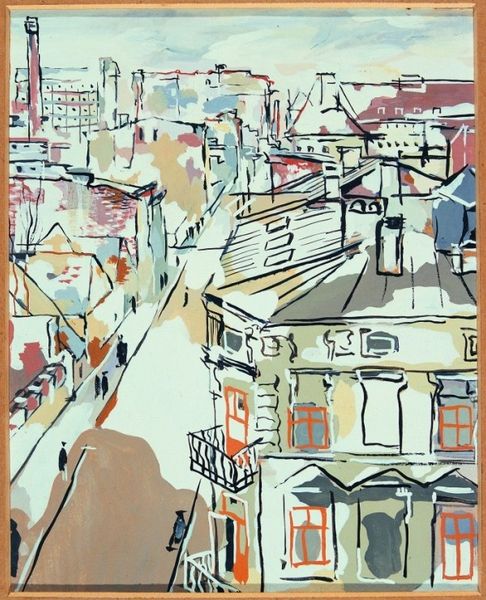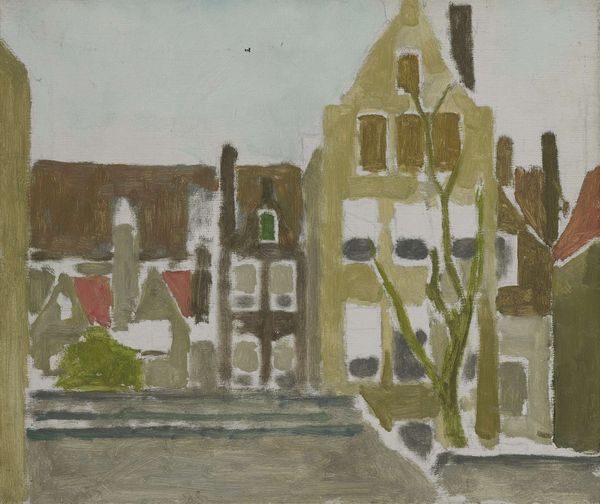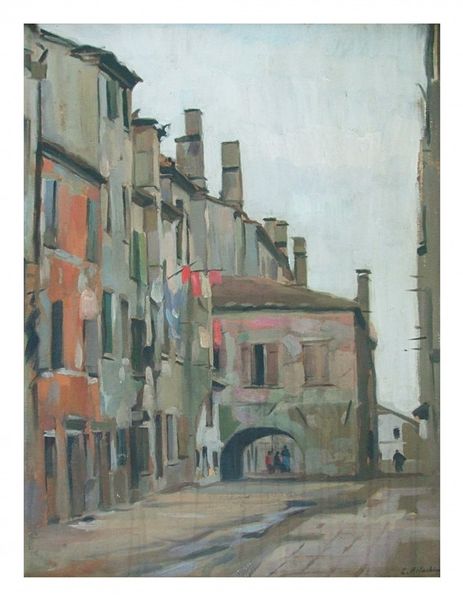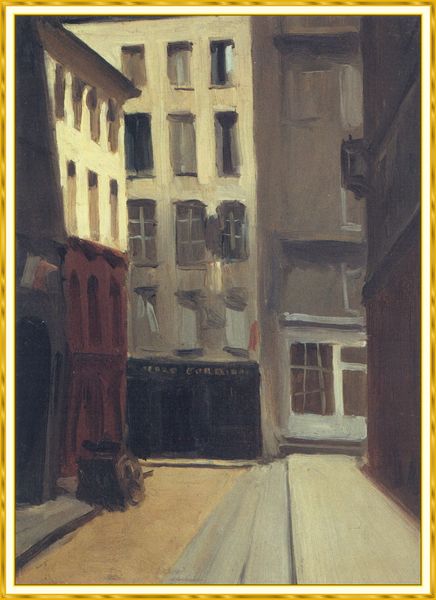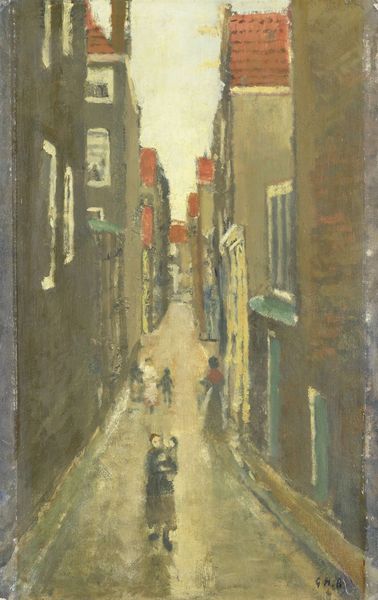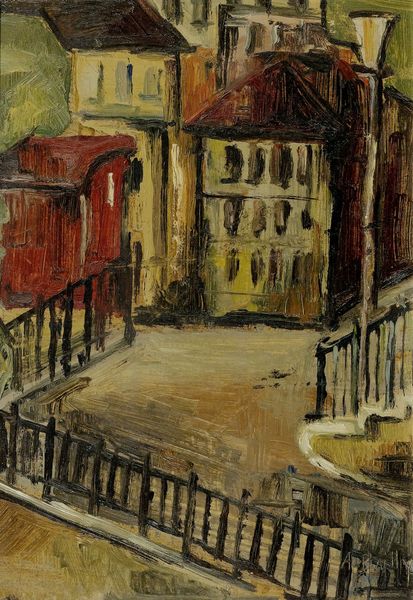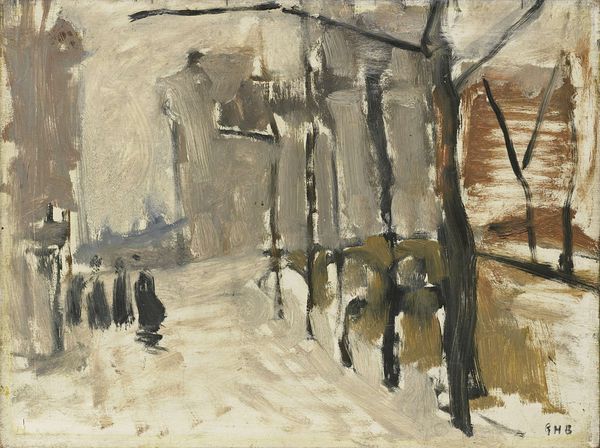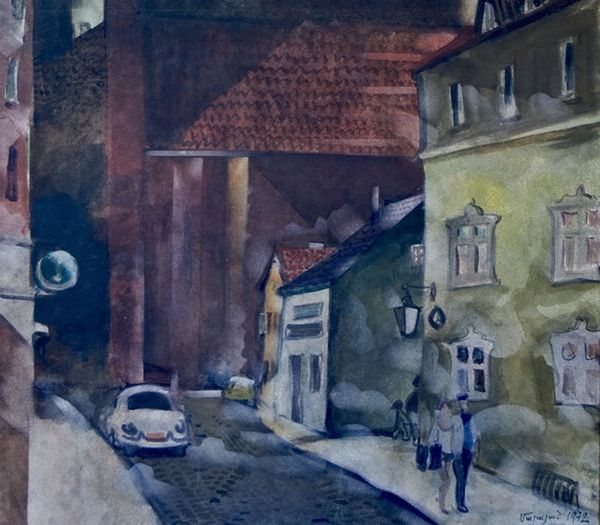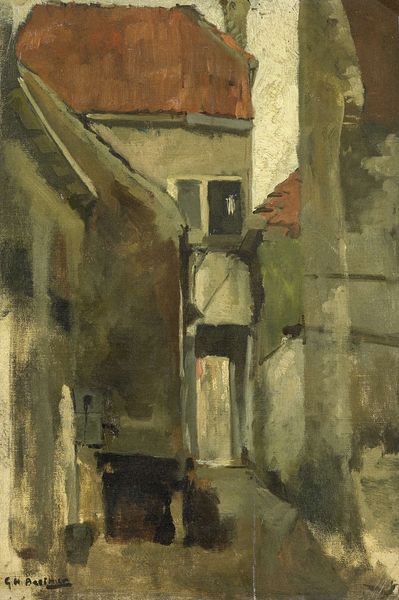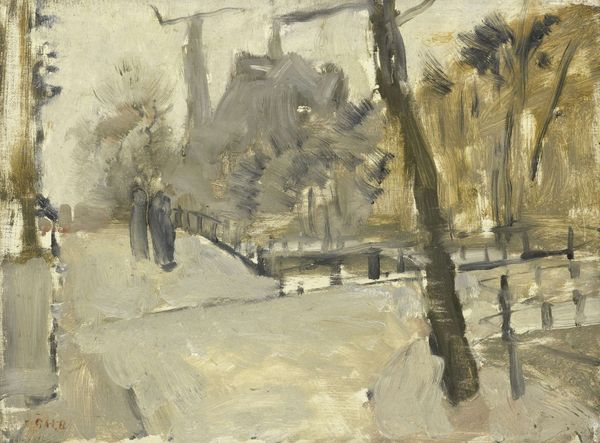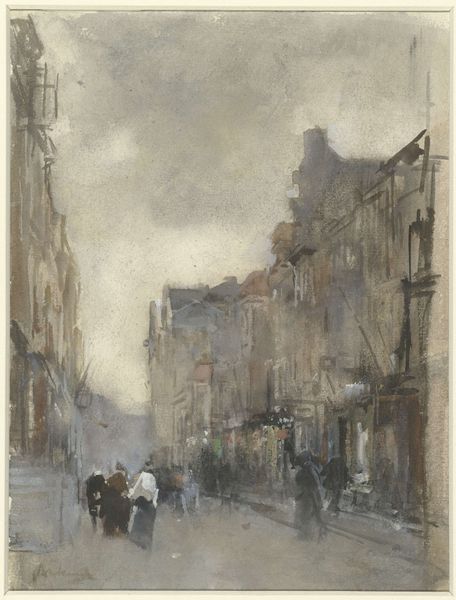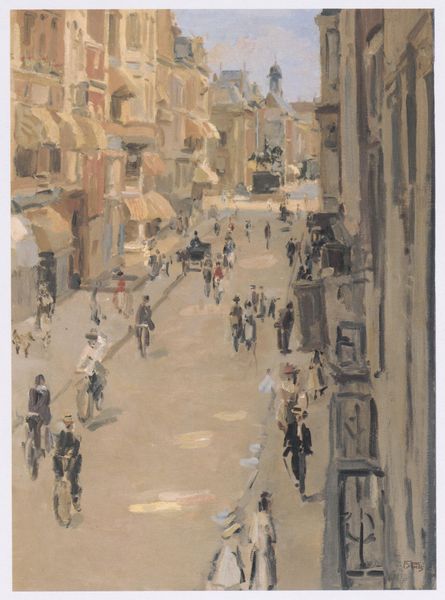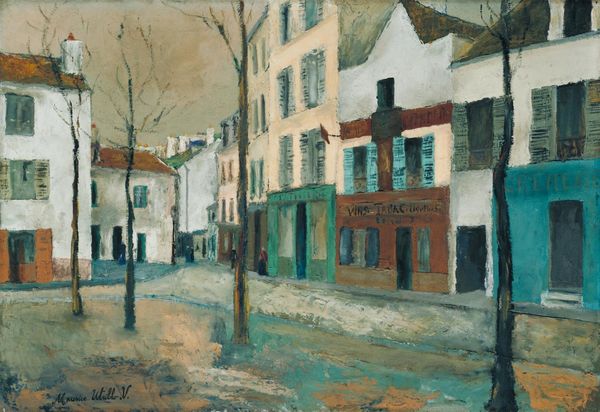
De Lauriergracht bij de Tweede Laurierdwarsstraat 1917 - 1918
0:00
0:00
georgehendrikbreitner
Rijksmuseum
Dimensions: height 41 cm, width 32.5 cm
Copyright: Rijks Museum: Open Domain
Editor: Here we have Breitner's "De Lauriergracht bij de Tweede Laurierdwarsstraat," painted around 1917-1918. It's an oil painting, and what immediately strikes me is how muted the colours are, almost like a black and white photo, yet with visible brushstrokes. How do you read this particular piece? Curator: Well, it’s less about 'reading' and more about deconstructing how Breitner presents the everyday. The roughness in the application of paint itself becomes significant. He's depicting a common Amsterdam street, but notice the lack of idealization. This challenges academic painting standards of the time by foregrounding process and material. Editor: So, the very *how* of its making is the point? It isn't just representing reality, it's drawing attention to its construction? Curator: Exactly. The quick, visible strokes and the muted palette – they reflect the gritty reality of urban life, especially during a time of great social change. Think about the labor involved in creating and maintaining such a cityscape. What are the materials that went into these buildings, these roads? What does it mean that Breitner focuses our gaze on *this* reality rather than on bourgeois interiors? Editor: I see, so it's not just a pretty picture of Amsterdam, it’s an engagement with the materiality of the city and its social fabric. Are the social themes explicitly expressed? Curator: Not explicitly. Breitner offers an index. We, as viewers, must consider the production – both of the painting, and of the world that it reflects – and connect them. Editor: That makes a lot of sense. I initially saw a melancholic scene, but now I recognize the work as engaging with themes around labor, construction, and societal materiality in art, giving new meaning to this piece. Thank you. Curator: Indeed! And recognizing this is key to understanding how art functions within the larger cultural and material landscape.
Comments
No comments
Be the first to comment and join the conversation on the ultimate creative platform.
